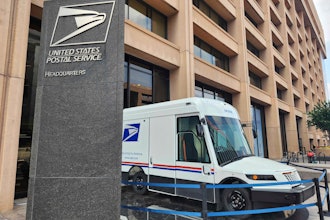The idea of profitable inbound freight sounds counter-intuitive. Shippers must spend money to obtain products and get them to their locations. Unfortunately, they lose sight of what profitable inbound freight management is about; shippers should have control over their inbound freight spend. The responsibility to get freight to your company is on suppliers, but the proactive management of inbound freight costs falls to the shipper. Instead of just winging it, shippers should learn to recognize the signs of weak profitability in inbound freight management, understand how better inbound freight management contributes to profitability, and follow a few steps to ensure their vendors perform as expected.
Signs Your Profitable Inbound Freight Is Tanking
Many signs can help shippers recognize when profitable inbound freight is simply a sinking ship. These include:
- Broad shipping terms requiring retroactive invoicing.
- Vendors that show up late.
- Missed inbound freight pickups.
- Higher labor costs due to poor planning.
- Add on costs without explanation.
- Damaged product.
- Inability to meet order minimums.
- Too many carriers to manage.
- Vendors that want total control over shipping.
- Failure to adhere to the inbound freight routing guide.
- Lack of visibility into vendor-specific costs and data.
- Maintaining the status quo.
- Using outdated systems and management platforms.
Better Management of Vendors and Inbound Freight Reduces Inbound Freight Costs
The average company spends more than 40 percent of its annual freight budget on inbound freight according to the Aberdeen Group via Logistics Management, and companies spend approximately 40 percent of total yearly freight budget on inbound freight. Yet, shippers continue to leave inbound freight management in the hands of vendors and suppliers. Suppliers do not pay the cost; your organization does. Unfortunately, this is a common practice, and as vendors markup outbound freight costs to the tune of 10 to 15 percent, reports Alex Khan of Inbound Logistics, shippers end up with lower profit margins. Instead of leaving vendors to their own management styles, shippers must retake control over inbound freight, including gaining visibility into all costs and activities and transform inbound freight management from a cost center to profit center.
Steps to Achieve Profitable Inbound Freight
- Prepay for Defined Profitable Inbound Freight. An effective way to eliminate the vendor-specific control over inbound freight management costs is to prepay inbound freight shipping costs ensuring suppliers and vendors ship product based on your expectations, not the other way around.
- Change Prepaid and Add to Collect. There is the capability to change prepaid ship and add-on charges to collect-based management. However, not all carriers will work with this option, so it is up to each shipper to find out if their carrier allows for retroactive billing of shipping costs, allowing inbound freight to simply move throughout the process, requiring no payment on the part of the supplier.
- Offer Premium Services to Guarantee Delivery. Another way to ensure you receive the product as expected is to offer a premium service to guarantee the arrival of the shipment, such as guaranteeing work with a given supplier if all conditions are met.
- Create and Launch a Premium Membership Program. Amazon has already proven the efficacy of customers paying for a premium service. Instead of merely offering premium, value-added capabilities, shippers should create a membership program, ensuring suppliers and vendors pay associated dues and effectively pay for inbound freight themselves.
- Reduce Safety Stock With Innovative Fulfillment Models. Utilizing just-in-time delivery and cross-docking are other alternatives to reducing the burden on your docks. However, this will require the dedication of your suppliers, as well as carriers, to work to ensure such actions proceed unhindered.
- Consolidate Freight. A final tactic to reducing inbound freight costs is to consolidate inbound freight into larger shipments which reduce the risk of late deliveries, but assumes the risk that if an issue does come up that issue will delay all inbound packages in the now consolidated full truckload shipment. Ultimately, you must trust in your supply chain and hold any vendor accountable for actions that result in delays.
These steps also provide a checklist for what vendors may be contributing to higher inbound freight costs. If they do not fall in line with these steps, they are eating away at your organization’s profitability.
Evaluating vendors for their practices in managing inbound freight might seem like a costly process, but failure to understand your vendors’ activities and their impact on your bottom line will result in higher freight costs. Shippers should learn to recognize the signs of weak profitability in inbound freight management, why better management of vendors leads to better freight cost control and follow the steps to achieve profitability in inbound freight management.
This story originally appeared on the Cerasis blog.






















